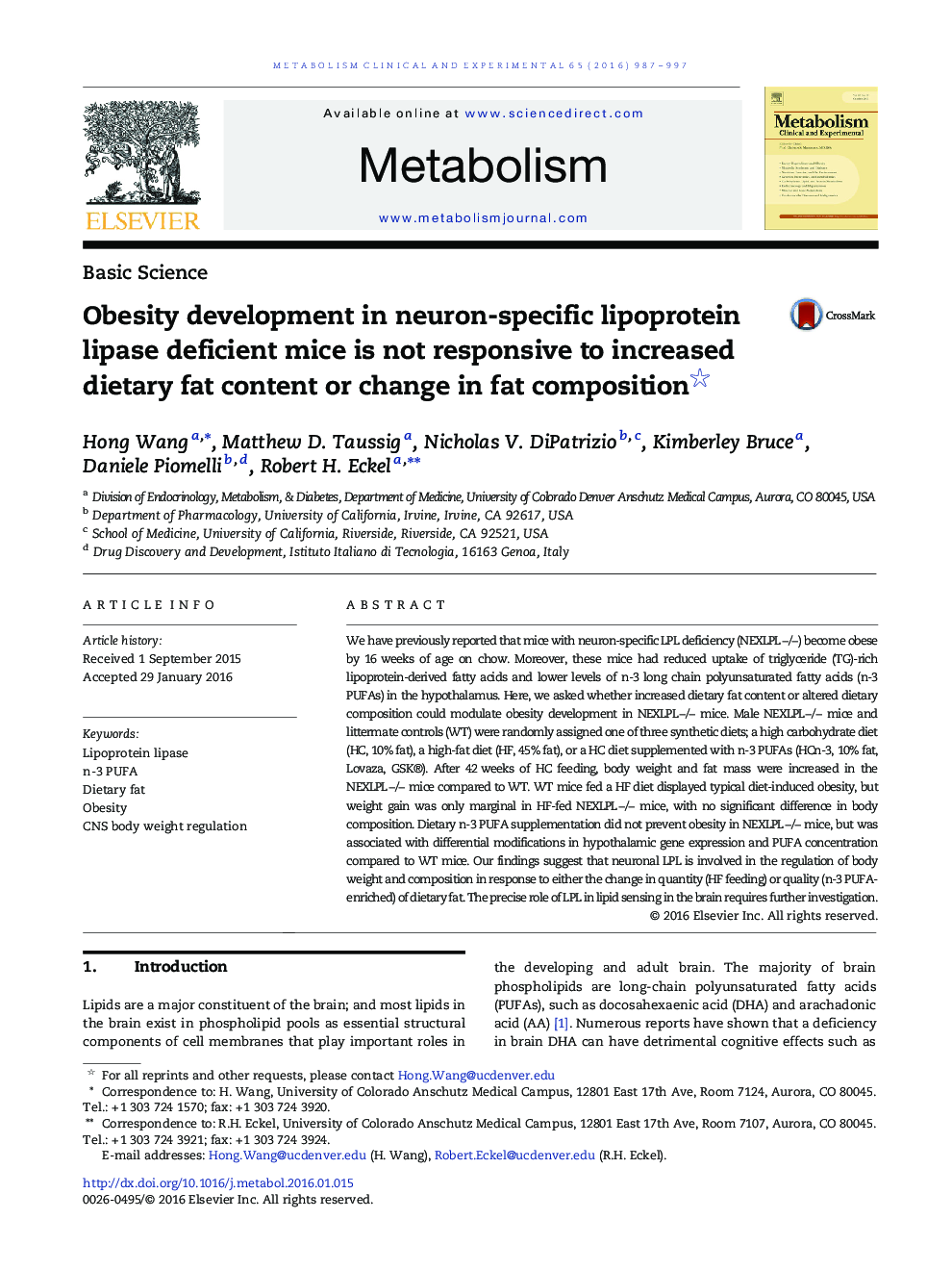| Article ID | Journal | Published Year | Pages | File Type |
|---|---|---|---|---|
| 2805412 | Metabolism | 2016 | 11 Pages |
We have previously reported that mice with neuron-specific LPL deficiency (NEXLPL −/−) become obese by 16 weeks of age on chow. Moreover, these mice had reduced uptake of triglyceride (TG)-rich lipoprotein-derived fatty acids and lower levels of n-3 long chain polyunsaturated fatty acids (n-3 PUFAs) in the hypothalamus. Here, we asked whether increased dietary fat content or altered dietary composition could modulate obesity development in NEXLPL −/− mice. Male NEXLPL −/− mice and littermate controls (WT) were randomly assigned one of three synthetic diets; a high carbohydrate diet (HC, 10% fat), a high-fat diet (HF, 45% fat), or a HC diet supplemented with n-3 PUFAs (HCn-3, 10% fat, Lovaza, GSK®). After 42 weeks of HC feeding, body weight and fat mass were increased in the NEXLPL −/− mice compared to WT. WT mice fed a HF diet displayed typical diet-induced obesity, but weight gain was only marginal in HF-fed NEXLPL −/− mice, with no significant difference in body composition. Dietary n-3 PUFA supplementation did not prevent obesity in NEXLPL −/− mice, but was associated with differential modifications in hypothalamic gene expression and PUFA concentration compared to WT mice. Our findings suggest that neuronal LPL is involved in the regulation of body weight and composition in response to either the change in quantity (HF feeding) or quality (n-3 PUFA-enriched) of dietary fat. The precise role of LPL in lipid sensing in the brain requires further investigation.
